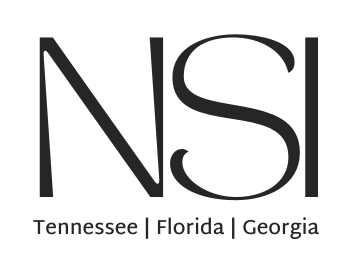What is Regenerative Medicine & How Do I Prepare For My Procedure?
Many advances have been made in the field of regenerative medicine. Improving the body’s ability to heal itself has had a significant effect on rehabilitation and treating chronic pain. At NSI, we use advanced treatment methods to help patients recover from physical injuries and chronic pain, including advanced options in regenerative medicine.
Regenerative medicine involves treatments that help the body replace or regenerate cells or tissue. Stem cell therapy, PRP treatments, and prolotherapy are some examples of treatments we use at NSI to help the body heal and regenerate tissue. The body has the incredible power to repair damaged tissues, but it often requires medical intervention to stimulate these processes. This field is continuously changing and improving as research explores new ways to access the body’s ability to heal itself from injuries and degenerative diseases.
This is a list of prescription and over-the-counter Non-steroidal Anti-Inflammatory Drugs (NSAIDs) that should be avoided for 2 weeks before your Regenerative procedure and for 2 weeks after your Regenerative procedure:
(Generic name in bold and trade name in parentheses)
- diclofenac (Arthrotec, Cataflam, Flector, Voltaren, Zipsor, Zorvolex)
- diflunisal(Dolobid)
- etodolac (Lodine)
- fenoprofen (Nalfon)
- flubiprofen (Ansaid)
- ibuprofen (Advil, Combunox, Dolgesic, Duexis, Genpril, Halpran, Medipren, Motrin, Nuprin, Pamprin, Q-Profen, Rufen, Trendar, Tab-Profen, Vicoprofen)
- indomethacin (Indo-Lemmon, Indocin, Indomethagan)
- ketoprofen (Actron, Orudis, Oruvail)
- ketorolac (Toradol)
- meclofenamate (Meclomen)
- mefenamic acid (Ponstel)
- meloxicam (Mobic)
- nabumetone (Relafen)
- naproxen (Aleve, Anaprox, Naprapac, Naprelan, Naprosyn, Naproxyn, Vimovo)
- oxaprozin (Daypro)
- phenylbutazone (Cotylbutazone)
- piroxicam (Feldene)
- salsalate (Disalcid , Trilisate)
- sulfasalazine (Azulfidine)
- sulindac (Clinoril)
- tolmetin (Tolectin)
- celecoxib (Celebrex)
Steroids are administered orally in pill form, or via injection into muscles, veins, epidurals, joints, bursae, tendons, and other methods. They can also be delivered topically through creams applied to the skin. It is crucial to consider all forms of steroid administration that may affect the outcome of your regenerative procedure.
This is a list of prescription and over-the-counter Steroids that should be avoided for 4 weeks before your Regenerative procedure and for 4 weeks after your Regenerative procedure.
Trade name in parentheses
- betamethasone (Celestone)
- cortisone (Cortone)
- dexamethasone (Decadron)
- hydrocortisone (Cortef)
- methylprednisolone (Depo-Medrol, Medrol, Solu-Medrol)
- prednisolone (Hydeltra, Orapred, Prelone)
- prednisone
- triamcinolone (Aristocort, Aristospan, Kenalog)
If you have a medical emergency that requires Steroids then that emergency certainly takes precedence and Steroids should be used under those circumstance
What to expect during your Regenerative Medicine Procedure
What to Wear: On the day of your Regenerative injection, wear loose, comfortable clothing for easy access to the targeted area. Choose exercise or lounge wear without metal to avoid blocking x-ray visualization.
Driver Required: Always have a driver take you home after a Regenerative procedure. Numbing medicine may slow your foot pedal reaction time, so a driver is essential for at least 4 hours after the injection, for your safety and others. Plan for 90 minutes total time for the procedure and observation.
Injection Safety & Risk Management: When you and Dr. Tolman decide to move forward with plans to perform a Regenerative procedure, he will ask a detailed series of questions with your safety in mind. The risk of any medical procedure is never 0% but working together with Dr. Tolman you can reduce the risk as low as possible.
Procedure Related Anxiety & Mild Sedation Options:
If you would benefit from mild sedation in order to go through with your Regenerative procedure, a medication can be prescribed to you in advance during the office visit to schedule your procedure. This prescription should be filled enough in advance so can swallow the tablet at home two hours before the scheduled time of your Regenerative procedure. If any type of sedation is used during your procedure then you should not drive until the following day after you have had a full night sleep. An additional option to make you more comfortable is the use of Nitrous Oxide “laughing gas” during your procedure.
Blood Thinners: There are many over-the-counter and prescription medications that are designed specifically to thin your blood and there are many others that thin your blood as a side effect. All of these medications make injections more risky because they cause you to bleed excessively in and around the treatment site after the injection needle is removed. When planning your Regenerative procedure Dr. Tolman will go through a long list of these medications to make the injection as safe as possible by minimizing your bleeding risk. You can help by reviewing these lists beforehand and notify Dr. Tolman if you are taking any of these over-the-counter or prescription medications:
Aspirin containing medications thin the blood up to 7 days:
- Aspirin (ASA – acetyl salicylic acid).
- Adprin
- Aggrenox
- Alka-Seltzer
- Anacin
- Ascriptin
- Aspergum
- Bayer
- Bayer Back & Body
- Bufferin
- Doan’s Pills
- Easpirin
- Ecotrin
- Endodan
- Equagesic
- Excedrin
- Fiorinal
- Fortabs
- Gelpirin
- Genacote
- Goody’s Extra Strength
- Halfprin
- Magnaprin
- Norwich
- Norgesic
- Orphengesic
- PC-CAP
- Percodan
- Robaxisal
- Roxiprin
- St. Joseph’s
- Supac
- Sureprin
- Synalgos-DC
- Soma-compound
- Talwin-compound
- Vanquish
- ZORprin
- Willow Bark Extract
Prescription Blood Thinners all work differently and for different lengths of time:
Supplements can also thin the blood:
Fish Oil, Garlic, Ginkgo Biloba, Ginseng, Willow Bark Extract
- apixaban (Eliquis)
- betrixaban (Bevyxxa)
- cilostazol (Pletal)
- clopidogrel (Plavix)
- dabigatran (Pradaxa)
- dalteparin (Fragmin)
- danaparoid (Orgaran)
- dipyridamole (Persantine)
- edoxaban (Savaysa)
- enoxaparin (Lovenox)
- fondaparinux (Arixtra)
- heparin
- low molecular weight heparin (Lovenox)
- pentosan polysulfate sodium (Elmiron)
- pentoxifylline (Trental)
- prasugrel (Effient)
- rivaroxaban (Xarelto)
- ticagrelor (Brilinta)
- ticlopidine (Ticlid)
- tinzaparin (Innohep)
- warfarin
- (Coumadin)
To plan appropriately Dr. Tolman needs to know which of these prescription or over-the-counter NSAIDs you take regularly, occasionally, or even rarely:
- diclofenac (Arthrotec, Cataflam, Flector, Voltaren, Zipsor, Zorvolex)
- diflunisal(Dolobid)
- etodolac (Lodine)
- fenoprofen (Nalfon)
- flubiprofen (Ansaid)
- ibuprofen (Advil, Combunox, Dolgesic, Duexis, Genpril, Halpran, Medipren, Motrin, Nuprin, Pamprin, Q-Profen, Rufen, Trendar, Tab-Profen, Vicoprofen)
- Indomethacin (Indo-Lemmon, Indocin,Indomethagan)
- ketoprofen (Actron, Orudis, Oruvail)
- ketorolac (Toradol)
- meclofenamate (Meclomen)
- mefenamic acid (Ponstel)
- meloxicam (Mobic)
- nabumetone (Relafen)
- naproxen (Aleve, Anaprox, Naprapac, Naprelan, Naprosyn, Naproxyn, Vimovo)
- oxaprozin (Daypro)
- phenylbutazone (Cotylbutazone)
- piroxicam (Feldene)
- salsalate (Disalcid , Trilisate)
- sulfasalazine (Azulfidine)
- sulindac (Clinoril)
- tolmetin (Tolectin)
Blood Clotting Disorders
Notify Dr. Tolman & his team if you have a blood clotting disorders hemophilia, low platelets, etc. to avoid bleeding complications from the spine injection.
Infection(s)
You should not get a Regenerative injection if you have an infection anywhere in your body – even a cold or flu! Whether or not you are taking antibiotics there is a chance of moving that infection into your central nervous system causing meningitis. Make sure to tell Dr. Tolman & his team if you have had a recent infection – even if you are taking antibiotics and no longer feeling the symptoms of the infection.
Recent Dental Work
Bacteria can enter your bloodstream during routine dental cleaning even if you have healthy teeth and gums. Make sure that you notify Dr. Tolman & his team if you have had any dental work in the 2 weeks prior to your scheduled Regenerative procedure to avoid infection complications in the central nervous system such as meningitis.
Dye Allergy
Notify Dr. Tolman & his team if you have an allergy to or x-ray dye (contrast). It is possible to perform injections without x-ray dye (contrast).
Prolotherapy
When ligaments and tendons are damaged, the joints they move and protect can suffer from limited strength and chronic pain. Repairing these damaged tissues is the best way to stop pain and improve function. Prolotherapy uses targeted injections that stimulate healing of ligaments and tendons. Injections include a concentration of local anesthetic and dextrose that is introduced into affected joints, tendons or ligaments to stimulate healing. The treatment creates a healing response, allowing the body to repair these tissues.
Stem Cell Therapy
Stem cells have the ability to stimulate and improve healing of damaged tissue and are found in tissues throughout the body. Unfortunately, they cannot be delivered in the quantities needed to specific areas without assistance. Stem cell therapy involves a multi-step process to harvest stem cells from tissue like bone marrow, blood or fat and concentrate them to deliver through an injection to a targeted area in the body. Our clinics at NSI utilize advanced equipment and medical technology to perform this procedure for patients to treat damaged tissues and improve the body’s healing process.
Platelet Rich Plasma (PRP)
PRP injections are a safe biological treatment, as the plasma is derived from your own blood. A small sample of blood is sent through a centrifuge that spins and filters out the platelets and plasma to create PRP. This substance is then reintroduced through an injection to areas that are damaged or require healing. PRP is concentrated with growth factors that can speed up and stimulate healing with no risk of a bad reaction or negative side effects. This is since it is extracted from the patient.


